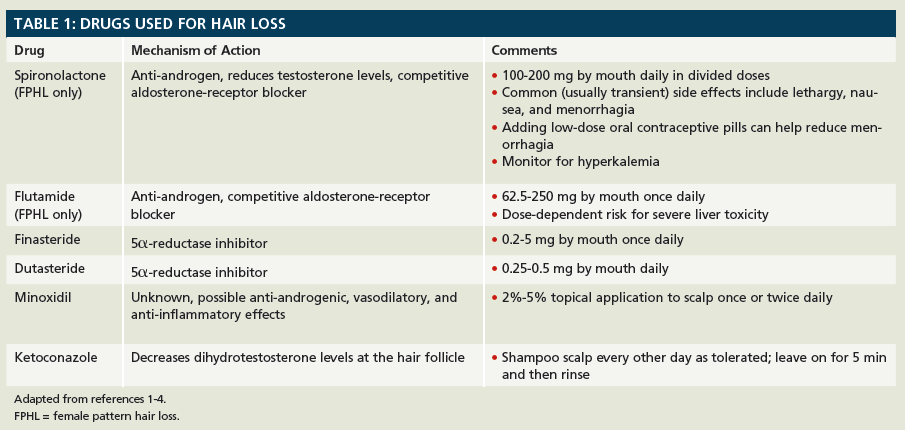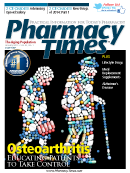Publication
Article
Pharmacy Times
Lifestyle Drugs: Erasing the Signs of Time
Author(s):
Many people dream of a magic pill to prevent or even reverse aging.
Many people dream of a magic pill to prevent or even reverse aging.
Youngsters—that is, people younger than 50 years—can’t really understand jokes about aging-related changes. Only experience gives real insight. Once age 50 hits, most people accept the visible signs of aging, but few like them. The sag, bag, and gradual fading of hair and skin color can be disconcerting; joking is a common coping mechanism. Many people dream of a magic pill that could prevent or even reverse the physical annoyances that come with aging, and researchers have been working since the 1970s to develop pharmaceuticals that can make the mirror a friend rather than a foe. This article reviews what’s within the realm of possibility for individuals who desire lifestyle drugs.
The Balding Pate
Female pattern hair loss (FPHL)—characterized by follicular miniaturization—is the most common cause of alopecia in women. Its incidence increases with age: by 70 years, more than 55% of women have some degree of FPHL.1 The condition is regulated primarily by androgens and estrogens, and it is difficult, but not entirely impossible, to reverse.2,3
When men begin losing hair, it’s usually androgenetic alopecia (AGA) or male pattern balding. Up to half of men will have some degree of AGA by age 50.1 Hair thinning after age 60, known as senescent alopecia, involves a decrease in androgens and 5α-reductase, which convert testosterone to dihydrotestosterone in the hair follicle.4

Move your cursor over the image to enlarge it.
Many OTC and prescription drugs are available to address hair loss (Table 1). The goal in treatment is to slow (or halt) the rate of hair loss and stimulate hair regrowth. Pharmacists must manage patients’ expectations regarding hair regrowth. Patients respond to these medications in vastly different ways, and not all will see complete regrowth. Pharmacists should stress several key points with patients:
- All treatments appear to work best when started soon after hair loss begins.2,4
- Combinations of treatments tend to work better than single products do.2,4
- Finasteride blocks 5a-reductase and rarely creates significant hair regrowth in older men.4
The FDA has approved several nonprescription low-energy laser light beams for alopecia. These handheld, hairbrushor comb-shaped devices shine red light directly on the scalp. Results of trials for one such device, which is recommended to be used for one 11-minute session 3 times per week, have demonstrated an increase in hair density and better subjective hair growth assessments within 8 to 16 weeks.5 Often, patients use these devices with drug treatment (usually minoxidil). High-energy lasers are also being explored to restore hair loss.2 Gorgeous Lashes (Wink, Wink)
Longer, thicker eyelashes are the mantra of mascara advertisements. The opposite— thinning lashes, or hypotrichosis—often erodes confidence and destroys appearance. Enter once-daily topical bimatoprost ophthalmic solution 0.03%, an ophthalmic prostaglandin analogue that increases eyelash length, thickness, and darkness. Patients usually see improvement within 16 weeks.6 Between 25% and 45% of patients develop conjunctival hyperemia (pink eye) with bimatoprost use, however, and ocular pruritus and skin discoloration are also common.7 Most insurers will not pay for bimatoprost without strong medical justification. Note that it is now being prescribed for patients who experience significant eyelash loss after chemotherapy.8
From Sulky Skin to Silky Skin?
Today’s active elders represent the first generations of Americans to show the effects of sun exposure. Before World War II, sunbathing wasn’t popular, or even accepted. After the war, Americans began to equate tanned skin with good health, and habitual sunbathing, beach vacations, outdoor activities, skimpier clothing, and tanning beds increased sun exposure significantly.9 Atmospheric ozone depletion has also increased the amount of ultraviolet B (UVB) light exposure.10 This combination of factors has increased dermal inflammation, altered the skin’s immune response, increased the incidence of skin cancer, and caused many people to age prematurely. Elder Americans are now developing wrinkles, elastosis, actinic keratosis, irregular pigmentation, telangiectasia, and—more often than ever before—malignant skin tumors.11
The best way to ensure healthy skin is through photoprotection: sunscreens, sun-protective clothing, and sun avoidance. Most pharmacies stock a selection of sunscreens containing chemical and/ or physical UV filters. Sunscreens with sun protection factor greater than 30 usually contain both chemical sunscreens (eg, para-aminobenzoic acid [PABA], PABA esters, cinnamates, salicylates) and physical agents (eg, zinc oxide, titanium oxide, iron oxide).12
Once wrinkles and other forms of photo-aging begin to develop, topical retinoids are the cornerstone of treatment. Retinoids control cellular proliferation and differentiation, increase collagen in photo-aged skin, and improve roughness, dyspigmentation, and fine wrinkles. Tretinoin, adapalene, and tazarotene are available in different vehicles (creams, gels, ointments, and lotions). A number of OTC products contain retinol and retinol-A. Pharmacists need to counsel patients that (1) improvement takes time, and (2) if patients dislike the feel of one delivery vehicle, they may prefer a different vehicle. Most patients will see results within 4 months.12
The OTC aisle contains many cosmeceuticals (Online Table 2) to address photo-aging, and having a working knowledge of these products is helpful.
TABLE 2: COSMECEUTICALS FOR PHOTOAGING
- Peptides (amino acid chains) are fragments of large proteins including collagen; they may penetrate the dermis and stimulate collagen production. Example: Pal-KTTS is a collagen peptide fragment
- Antioxidants reduce free radicals to less reactive species, reducing oxidative damage; UV damage creates free radicals that break down collagen, so antioxidants may reduce aging and decrease inflammation Examples: α-Tocopherol (vitamin E), L-ascorbic acid (vitamin C), retinol (vitamin A), and niacinamide (vitamin B3)
- Botanicals are naturally occurring antioxidants; few, if any, studies support their use Examples: Flavonoids (procyanidins), genistein, resveratrol, beta-carotene, lycopene, lutein, zeaxanthin, cryptoxanthin, and L-ergothioneine
Adapted from reference 12.
Conclusion
What about gray hair? Smoking accelerates graying, so smoking cessation is important to prevent premature graying. Unfortunately, no lifestyle drugs preserve hair color or prevent graying. But don’t give up! Several drugs have been associated with hair repigmentation (imatinib,13 acitretin,14 erolitinib,15 lenolidamine,16 latanoprost17). Unfortunately, all of these drugs induce side effects that restrict their use to medical necessity. But who knows what future research could bring?
Ms. Wick is a visiting professor at the University of Connecticut School of Pharmacy and a former National Cancer Institute employee.
References
1. Gan DC, Sinclair RD. Prevalence of male and female pattern hair loss in Maryborough. J Investig Dermatol Symp Proc. 2005;10:184-189.
2. Atanaskova Mesinkovska N, Bergfeld WF. Hair: what is new in diagnosis and management? Female pattern hair loss update: diagnosis and treatment. Dermatol Clin. 2013;31:119-127.
3. Levy LL, Emer JJ. Female pattern alopecia: current perspectives. Int J Womens Health. 2013;5:541-556.
4. Mirmirani P. Age-related hair changes in men: Mechanisms and management of alopecia and graying. Maturitas. 2014 Oct 23. [Epub ahead of print]
5. FDA clears HairMax to treat female pattern hair loss and promote hair growth. HairMax website. www.hairmax.com/mediakit/PressReleases/6_04_11_female_clearance_PR.pdf. Accessed December 19, 2014.
6. Fagien S, Walt JG, Carruthers J, et al. Patient-reported outcomes of bimatoprost for eyelash growth: results from a randomized, double-masked, vehicle-controlled, parallel-group study. Aesthet Surg J. 2013;33:789-798.
7. Latisse (bimatoprost) ophthalmic solution [prescribing information]. September 2014. Allergan, Inc., Irvine, CA. Available at www.allergan.com/assets/pdf/latisse_pi.pdf. Accessed December 22, 2014.
8. Ahluwalia GS. Safety and efficacy of bimatoprost solution 0.03% topical application in patients with chemotherapy-induced eyelash loss. J Investig Dermatol Symp Proc. 2013;16:S73-S76.
9. Jackson R. Elderly and sun-affected skin. Distinguishing between changes caused by aging and changes caused by habitual exposure to sun. Can Fam Physician. 2001;47:1236-1243.
10. Sterry W, Paus R, Burgdorf W. Light-induced aging and photocarcinogenesis. In: Sterry W, Paus R, Burgdorf W, eds. Thieme Clinical Companions Dermatology. 5th ed. Stuttgart: Georg Thieme Verlag KG; 2006:295-302.
11. Šitum M, Buljan M, ÄŒavka V, Bulat V, Krolo I, Mihić LL. Skin changes in the elderly people — how strong is the influence of the UV radiation on skin aging? Coll Antropol. 2010;34(Suppl 2):9-13.
12. Bilaç C, Sahin MT, Oztürkcan S. Chronic actinic damage of facial skin. Clin Dermatol. 2014;32:752-762.
13. Etienne G, Cony-Makhoul P, Mahon FX. Imatinib mesylate and gray hair. N Engl J Med. 2002;347:446.
14. Ward PD, Miller HL, Shipman AR. A case of repigmentation and curling of hair on acitretin therapy. Clin Exp Dermatol. 2014;39:91-92.
15. Cheng YP, Chen HJ, Chiu HC. Erlotinib-induced hair repigmentation. Int J Dermatol. 2014;53:e55-e57.
16. Dasanu CA, Mitsis D, Alexandrescu DT. Hair repigmentation associated with the use of lenalidomide: graying may not be an irreversible process! J Oncol Pharm Pract. 2013;19:165-169.
17. Bellandi S, Amato L, Cipollini EM, Antiga E, Brandini L, Fabbri P. Repigmentation of hair after latanoprost therapy. J Eur Acad Dermatol Venereol. 2011;25:1485-1487.







